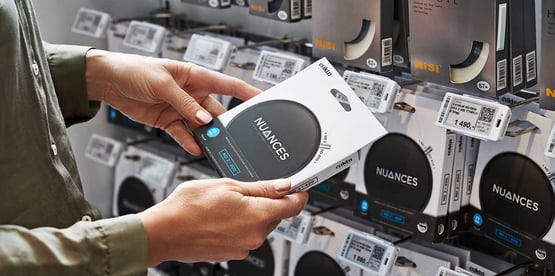Electronic shelf labels provide the foundation for retail digitisation

While retailers continue to invest in in-store technology, in the past 18 months there has been a noticeable shift towards technology that promotes a more omnichannel experience - electronic shelf labels (ESL).
To keep pace with consumers who are shopping seamlessly across physical and digital channels, retailers have increasingly focused on using technology that narrows the gap between offline and online over the last 18 months.
The future is arriving faster than ever. Take international grocery giant Carrefour. Alexandre Bompard, its chairman and CEO, has stated his vision to transform Carrefour into a digital retail company to unleash the full potential of omnichannel.
This is a business that is already advanced in technology usage. Crucially, it uses electronic shelf-edge labels (ESLs) to communicate dynamically with its customers on products, price and promotions, and to give staff and suppliers instant visibility of the status of the shelf to improve availability, store staff effectiveness and shelf execution.
“These are not your grandparents’ ESLs,” says Duncan Potter, chief marketing officer at leading ESL provider Pricer. “Even though the technology has been around for some 30 years, there is a constant stream of innovation. Yesterday they were used only for quick price changes. Today the electronic shelf is an effective platform for a raft of innovations that is being rapidly adopted, and showing a very fast ROI, as a result of a more demanding customer and their accelerated shift to online ordering.”
Electronic shelf labels offers more information at the shelf
Research undertaken by Pricer in 2021, among 18,000 people across Europe, revealed that 64% of consumers want more access to product information at the shelf edge, rather than just pricing – a demand that cannot be met using traditional paper labels.
ESLs, by contrast, can attractively display price, promotion, key ingredients and allergens, as well as the barcode for scanning or product location direction, providing a breadth of information for consumers who now ask about product sourcing, worker as well as animal welfare, and sustainability, in addition to price.
ESLs also confront the reality of rising labour costs, as they can be instantly made to display stock-taking information and use flash technology to show anomalies, stripping hours off the traditional stock-take and removing errors in manual processing. Pick-to-light systems, based on ESLs, are also now available with flash, so staff picking online orders can instantly identify products on their picking schedule.
Live examples in European supermarkets show that the time to pick each item can be cut by between five and 10 seconds, which translates into hard cash. As a comparison, Bain published figures in 2020 to show that hand-picking online orders – done with pen and paper, from a physical store, delivering it and charging no customer fees – typically result in an operating margin of minus 15%.
The same system works in reverse for rapid replenishment. Using labels with flash and location mapping, staff can find the correct place to restock much more easily. The time saved on each SKU replenished is between three and six seconds, while at a sell-through rate of 20,000 items per day in batches of 10 items, time saved per SKU is four seconds. At £17.25 hourly cost, this adds up to a saving of more than €13,800 per annum and potentially much higher with temp or seasonal staff.
The electronic shelf is an effective platform for a raft of innovations and shows a very fast ROI
Going even further, Pricer Shelf Vision involves cameras mounted on the opposite side of the aisle to ensure planogram compliance and gap detection, improving on-shelf availability and maximising rebates.
While it seems the action is happening at the shelf, the data derived from these activities, managed from an integrated platform in the cloud for stability and reliability, can be used to drive greater efficiencies across the entire supply chain.
This will ultimately help retailers realise the full potential of omnichannel, including improving availability of the products customers want, reducing waste from overstocking, and cutting labour costs while freeing people up to focus on higher-value tasks.
This article was originally published in The Future of Retail 2021 report, The Sunday Times, on December 12, 2021
https://www.raconteur.net/sponsored/electronic-shelf-labels-provide-the-foundation-for-retail-digitisation/